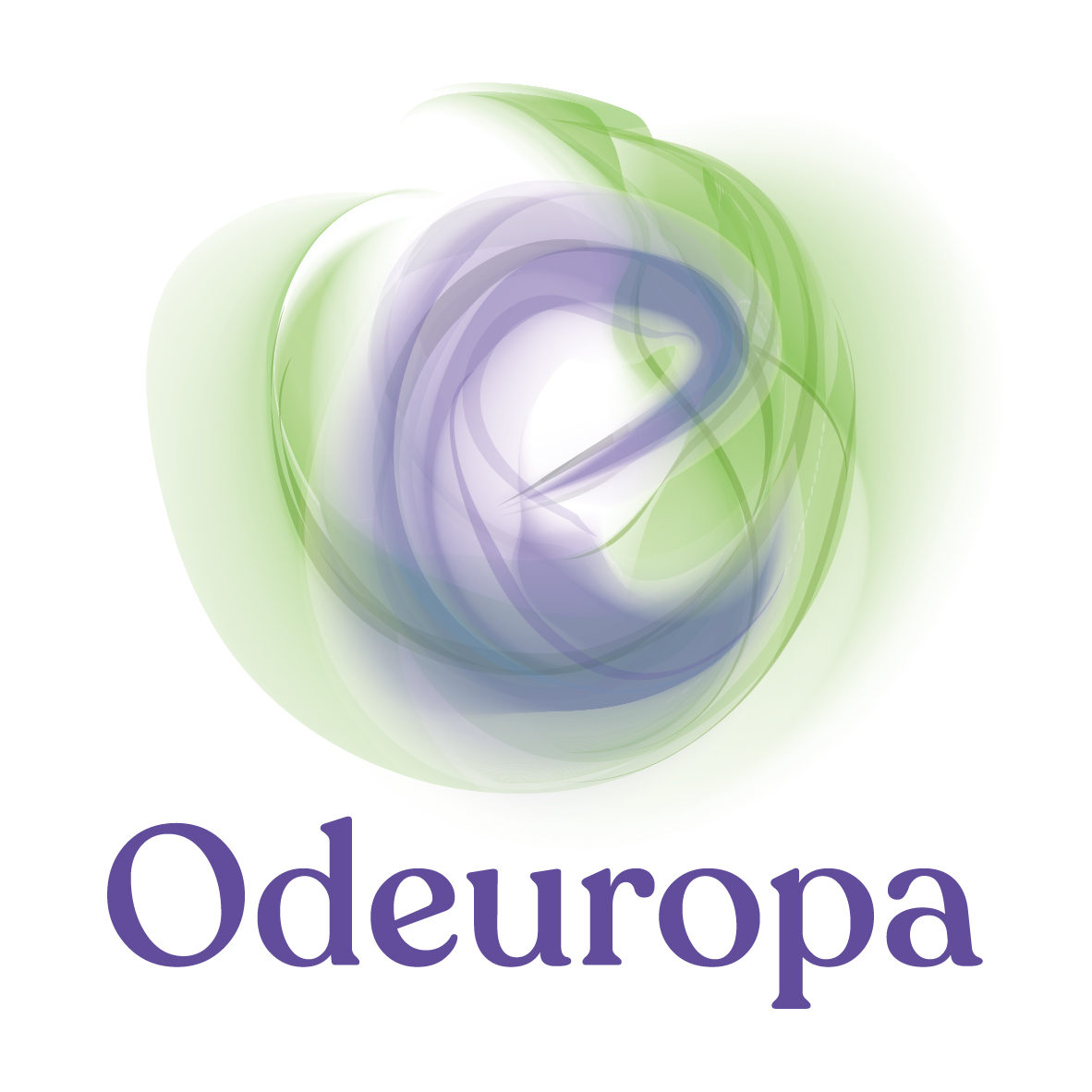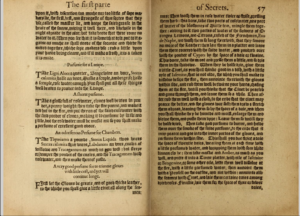On November 28th, 2023, over 140 people joined Odeuropa to celebrate its conclusion with one final bash: the Smell Culture Fair. The fair was a unique and engaging experience where we presented the project’s final results, trained heritage professionals, perfumers and other interested parties in techniques and best practices, and provided a space for networking for future collaborations. It brought together a varied, creative, range of experts on smell from inside and outside of academia.
The day kicked off in the iconic Trippenhuis, home of the Royal Netherlands Academy of Arts and Sciences, in Amsterdam with a plenary session consisting firstly of informative presentations about Odeuropa and secondly with a panel discussion providing various perspectives of smell culture studies. The plenary session started with Odeuropa’s principal investigator, Inger Leemans, who gave an overview of Odeuropa’s achievements such as the Smell Explorer, Encyclopedia of Smell History and Heritage, and the Olfactory Storytelling Toolkit and how these outcomes contribute to the field of smell culture studies. Inger also invited others to present Odeuropa’s collaborations. Bernardo Fleming, creative manager at IFF, presented the IFF x Odeuropa Historical Scent Collection, a smell kit that includes twelve historically informed scents developed for Odeuropa’s olfactory events. Isabelle Chazot, head of the Scientific Committee at the Osmothèque, Conservatoire International des parfums, presented the Heritage Smell Library which will safeguard a collection of Odeuropa’s heritage smells which will be housed at the institution’s archive.

Following the informative presentations, four different smell culture experts offered different perspectives of smell culture studies. Asifa Majid (cognitive science), Simon Niedenthal (game studies), Alison Heritage (heritage policy) and Gregorio Sola Vela (perfumer) provided us with short statements on their work, which was then followed by a lively panel discussion chaired by Odeuropa researcher Cecilia Bembibre. The panel enforced that smell culture can inform us about heritage, history and culture in various ways revealing that smell can help us think about language and can add and encourage play in the world around us as well as diversify collaborations. Towards the end of the panel, questions from the audience were taken which led to dynamic and interdisciplinary discussions, setting the tone for the rest of the day. The entire plenary session is now available for viewing on YouTube:
Overall, one key aspect that stood out during the entirety of the Smell Culture Fair was the impulse for connection. It was inspiring to witness how everyone present felt the need to connect with one another, bridging the gaps between different backgrounds and disciplines. The level of engagement and interest from attendees confirmed that the field of smell culture studies is generating a broader interest and gaining the recognition it deserves.
Following the plenary session, fair attendees were able to join two rounds of hands-on, nose-on workshops. Below we offer a few impressions of the different workshops.
Breakout Sessions and Workshops:
Hands-on Training – Olfactory Storytelling Toolkit:
Of the 140 attendees of the fair, 100 participated in the hands-on training of the Olfactory Storytelling Toolkit: A ‘How-To’ Guide for Working with Smells in Museums and Heritage Institutions (OST), led by Sofia Collette Ehrich and Alex McQueen. The training was divided into two parts, firstly an informative presentation about the OST and the value of olfactory storytelling in museums, and secondly, a hands-on activity with an emphasis on creating one’s own (imaginative) olfactory event using the OST’s appendix checklist – a 13 page resource that helps guide readers through using the content of the OST.

During the presentation, there were two opportunities for smell explorations where participants were invited to interact with historically informed scents developed by Odeuropa in collaboration with Museum Ulm for the Follow Your Nose! guided tours: the smell of a Pomander and Hell. Interaction with heritage scents added a nose-on understanding of what adding scents to your event can do. For example, many participants enjoyed the scent of Hell while others found it extremely foul. This showed participants that interaction with smells creates a subjective experience that can affect the intended outcome as well as a conversation starter as the group immediately started chatting and making connections with each other upon smelling.
In the second half of the workshop, both above-mentioned scents and their connected histories, were used as inspiration for creating one’s own olfactory event using the appendix checklist. We were met with fantastic and diverse ideas for hypothetical olfactory events that worked with both digital and physical collections. These spontaneously creative ideas showed that participants were easily able to create olfactory events using the appendix checklist alone reinforcing its effectiveness, accessibility, and workability. The intention was for the workshop to be an impulse, a catalyst for engagement, sensing, and reflection – and it worked. The participants were enthusiastic and inspired and we hope some of them will be able to use the OST in their own work. Download your own copy of the Olfactory Storytelling Toolkit (PDF).
Hands-on Training – Working with Existing Scents in GLAM Collections:
While the hands-on training on the OST focused on adding new scents to museum galleries, the hands-on training Working with Existing Scents in GLAMs focused on working with objects or spaces that have an inherent scent. Various olfactory objects were presented to the participants to smell in addition to a mini smellwalk that was led through the Trippenhuis library by Odeuropa researcher, Victoria-Anne Michel. The focus of this workshop was to ignite a spark that then ignited a flame of creativity and exploration in participants to explore spaces and objects through their nose.


The workshop, led by Victoria-Anne Michel and Cecilia Bembibre, started with introductions, which quickly turned into an exchange of ideas and opportunities of reflection. We were excited by how participants were quick to share multisensory impressions of the objects. They connected with the scents and the objects on a deep level, allowing their imaginations run wild and their narratives to take shape. The workshop taught us that working with scents and olfactory objects and spaces can stimulate rich discussions, insights, and build bridges between different people and perspectives.
Data Exploration Session:

During the Data Exploration sessions, participants were invited to explore the corpus of olfactory information extracted from texts and images throughout the Odeuropa project. In the image demonstrator participants could query the database of smell-related objects detected in a corpus of nearly 100k images from various museum collections and generate basic statistics such as object co-occurrences and historical distribution of objects found. With the text demonstrator participants were invited to search for specific smell descriptors, sources or emotions mentioned in the text, and, similar to the image demonstrator, generate statistics about their occurrences over time. Furthermore, participants were introduced to the Odeuropa Smell Explorer, where textual and visual references are merged and are easily accessible without technical knowledge required. Finally, we presented the Encyclopedia of Smell History and Heritage where stories and storylines are drawn out of the data collected by the technical teams of the Odeuropa project. Many attendees of the session reported that these training sessions helped them better understand how they could effectively use the Odeuropa tools in their own work. The video of the first data exploration session (both sessions covered the same topics) is available on YouTube:
The data explorations sessions were led by Vincent Christlein, Pasquale Lisena, Stefano Menini, Inna Novalija, Sara Tonelli, Raphaël Troncy, William Tullett, and Mathias Zinnen.
Smell Expo & Matchmaking:

After the workshops, fair attendees were invited to view the smell expo and matchmaking session to network in a casual setting.
The Smell Expo and Matchmaking part of the day proved to be extremely effective in its goals. Scholars, industry professionals, and business representatives were all able to connect and exchange ideas under one roof. The expo consisted of olfactory artists, perfumers and heritage institutions. Additionally, there were 12 research posters that showed the variability of smell research. This part of the event allowed international individuals from different disciplines to come together and discuss new possibilities of scent culture.

Odeuropa Smell Culture Fair Feedback Questionnaire:
Following the event, we asked participants for feedback via a 25 question survey. The outcome of the survey was positive and corroborated our own findings: that the fair attendees were made up of an interdisciplinary and diverse career background. To name a few, conservators, data scientists, curators, art historians, perfumers, journalists, archeologists, sensory consultants, cultural heritage experts, historians, aromatherapists attended our event. We look forward to receiving more data in the coming weeks, but for now we can report that after the event 93,5% said they would recommend an event like this to other colleagues and 96,8% said that they envision working with smell/olfactory heritage in the near future.
Takeaways:
All in all, the Odeuropa Smell Culture Fair was a celebration of the rich interdisciplinary community of practitioners and researchers who work with smell and the potential for that community – and the tools that Odeuropa have given them – to reshape the future of culture, heritage, and history. One big lesson that emerged from our project is the interdependence between academia and the various stakeholders in the field, including the industry and GLAMs. The collaboration between these different sectors is vital. Academia provides the reflective space for critical thinking and advancing knowledge, while the industry and GLAMs bring practical insights, resources, and real-world applications.

Reflection and action are not mutually exclusive; they need, benefit, and enrich each other. The closure event served as a steppingstone for future collaborations, and the desire to foster these connections is palpable. We recognize the significance of nurturing these relationships, as we believe that the impact of our research can only grow when we continue to collaborate and build upon the groundwork we have laid together.
Many thanks to Victoria-Anne Michel, Mathias Zinnen and Sofia Collette Ehrich for their input and impressions of the event and to Thom Goris for his support in making this event possible as well as to the Trippenhuis for hosting us. Thanks also goes to the rest of the Odeuropa team for organising such fantastic and engaging workshops throughout the day!



